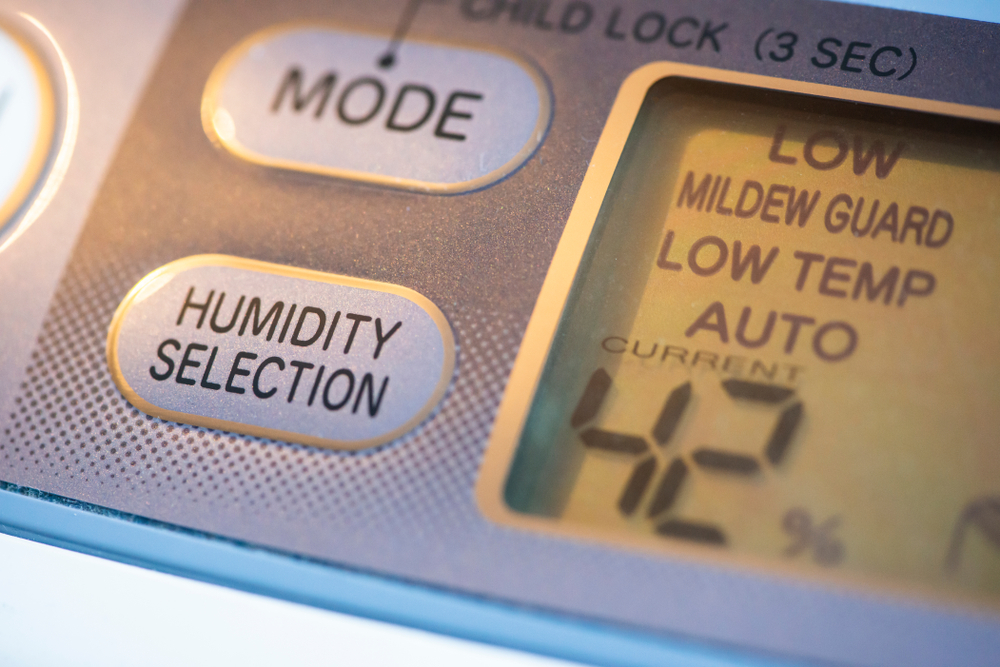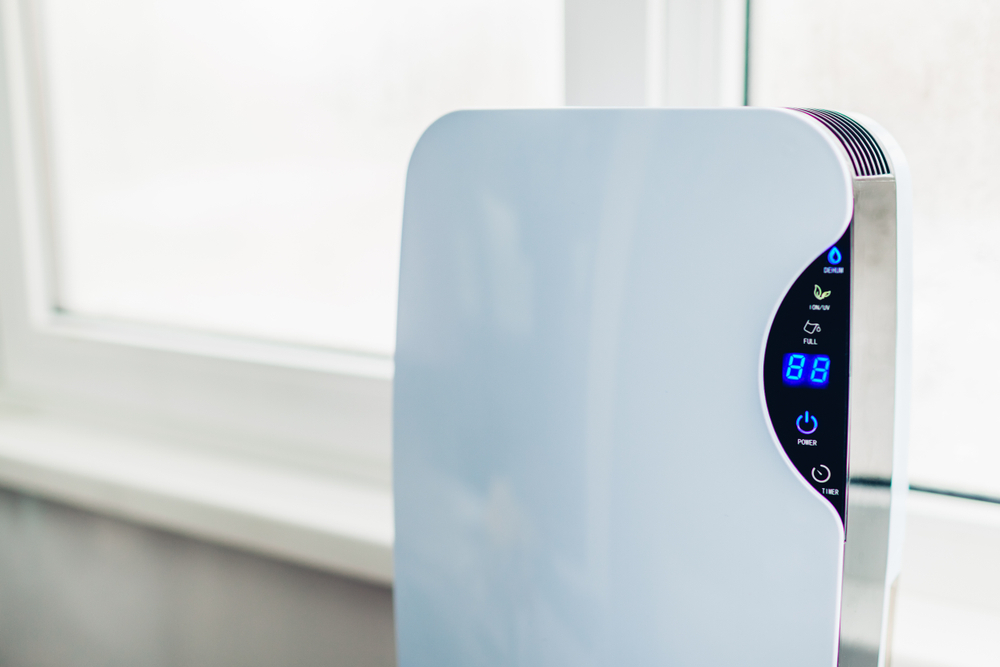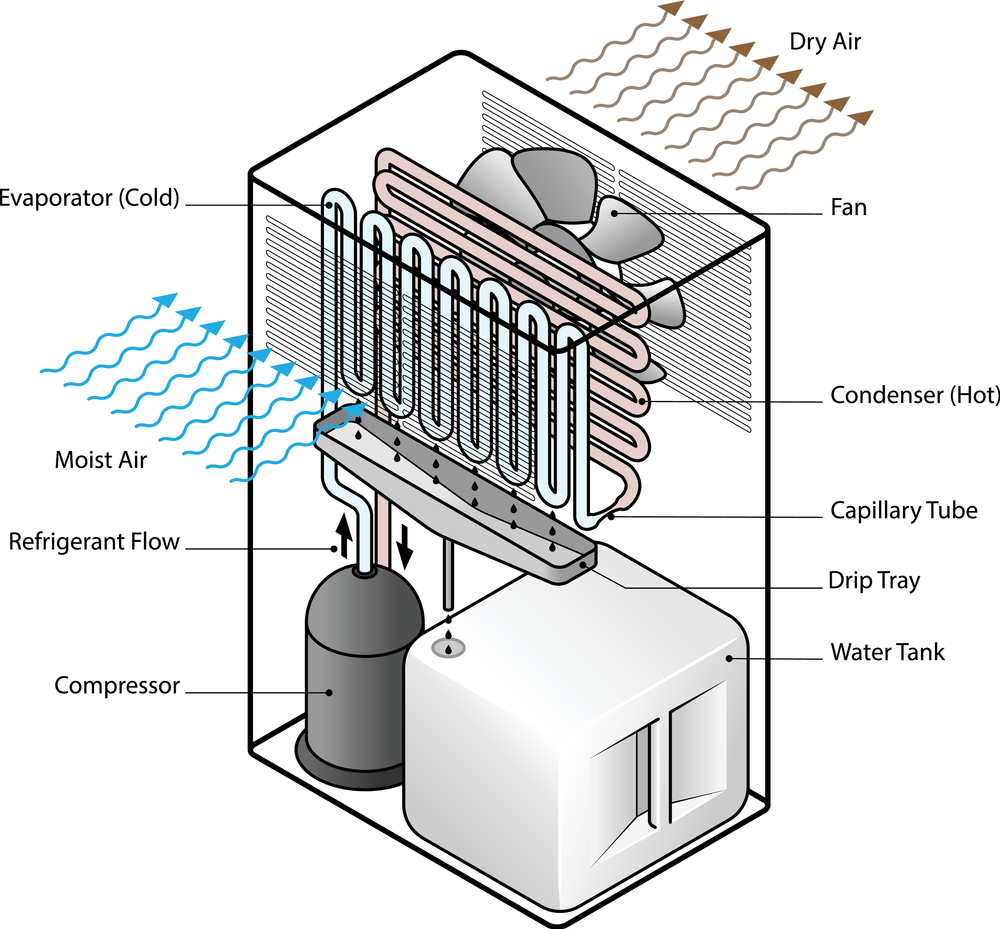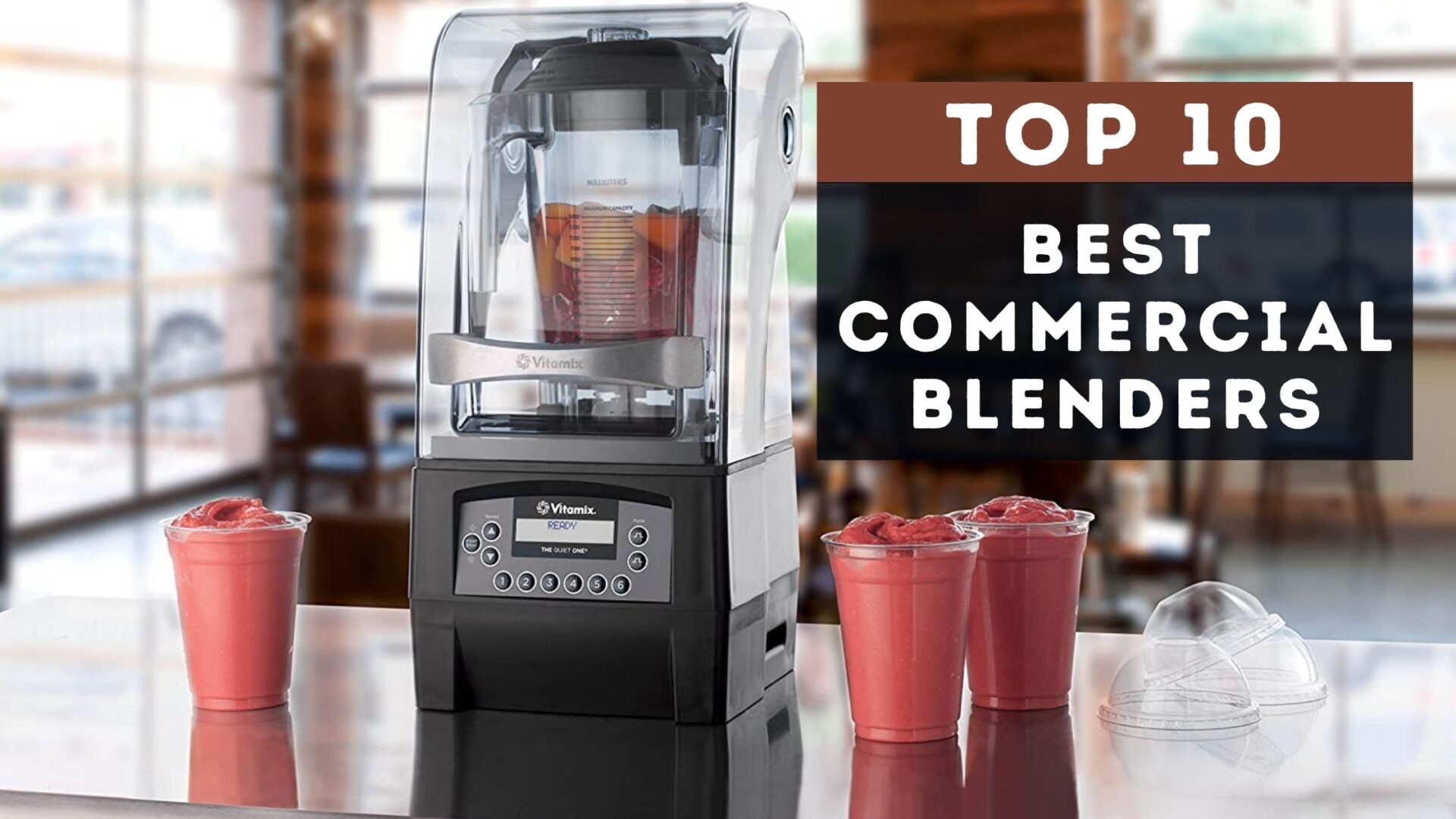Dehumidifiers in Cold Rooms
During the humid summer months, most people are aware that they need to dehumidify their homes. But what about in the winter?
Will a dehumidifier operate in a cold environment, and should you use one in the first place if it’s cold? The majority of portable dehumidifiers do not perform in chilly environments. Their user manuals usually say that a minimum operating temperature of 65 degrees Fahrenheit is required. Some dehumidifiers will work at temperatures lower than this. These are mainly desiccant dehumidifiers or dehumidifiers with particular defrost functions.
Desiccant dehumidifiers are useful for dehumidifying at extremely low temperatures or when extremely low humidity levels are required.
In most cases, you won’t need a dehumidifier in your house throughout the winter. The moisture content of cold winter air is lower than that of warm air, and it is often extremely dry. In the winter, people are more likely to use humidifiers to battle the dry air that can cause respiratory problems.
However, using a dehumidifier during the winter can help prevent mold growth in your basement. (Humidifiers are also used to kill fleas, which require moisture to survive.) In the winter, the demand for a dehumidifier will be mostly determined by the climate where you live.
Read Also: 10 Best Dehumidifier Under $200.
What is a desiccant dehumidifier?
A dehumidifier is a device that removes moisture from the air, and desiccant devices use silica gel or other similar materials to do so. Examples are Eva-dry E-500 Renewable Mini Dehumidifier, Big Betty Desiccant Dehumidifier, JJ CARE Silica Gel Dehumidifier.
Desiccant dehumidifiers have been around for a long time, but they’re becoming increasingly advanced and may be ideal for cold winter months.
Even though desiccant dehumidifiers must also operate at a certain temperature,
You can also expect much less noise from these units; since they’re not using compressors and motors as frequently as other models do because there is no need for them in most cases.
Above that, regardless of whether they’re set to 65°F or 85°F, they remove the same amount of water.
Why Most Dehumidifiers Do Not Work At Low Temperatures?
Dehumidifiers function similarly to air conditioners in most homes.
Their fan draws in the air and then attempts to cool it below the dew point, allowing water to condense out of it. The air is forced via coils in this portion of the process.
Because these coils must be kept cold, there’s a chance they’ll freeze if the room is too cold.
When this happens, the dehumidifier’s fan continues to run, but there is no water collected. The device continues to put a load on the energy bill and, as a result of its malfunction, eventually breaks down.
As you might expect, this isn’t normally an issue in most heated rooms, but it can be in unheated regions such as basements, garages, and crawlspaces.
Impact of Demographics
There’s no reason to use a dehumidifier in the winter if you reside in a really cold region because of how a dehumidifier functions. A dehumidifier’s sole purpose is to remove moisture from the air. They do this by trapping moisture inside their coils and then releasing it into a sealed system. If you try to use one in cold weather, the coils will eventually freeze, and the machine will stop working. As a result, using them in a bitterly cold area is somewhat worthless.

However, if you live somewhere warm, you may need to use a dehumidifier even in the winter. However, unless you have a lot of wetness in a specific space or live in a region with a lot of high relative humidity on a near-constant basis, you shouldn’t use one. In these situations, you should probably use a dehumidifier practically all of the time. If you reside in a dry area, you can usually get away with running the dehumidifier solely during the summer.
Frequently Ask Questions
What Should You Know About Dehumidifier Operating Temperatures?
Dehumidifiers are the best solution for moisture issues, whether you live in a hot area or have water running immediately behind your property. Another issue that might arise as a result of year-round moisture difficulties is low operating temperatures.
The ideal temperature for a dehumidifier to run isn’t standardized, but most experts recommend running them between 60 and 70 degrees Fahrenheit.
But what about in the winter?
Will a dehumidifier operate in a cold environment, and should you use one in the first place? The majority of portable dehumidifiers aren’t designed to perform in cold climates. Their user manuals usually say that a minimum operating temperature of 65 degrees Fahrenheit is required. Some dehumidifiers will work at temperatures lower than this. These are mainly desiccant dehumidifiers or dehumidifiers with particular defrost functions.

Dehumidifiers generally have a certain minimum temperature requirement, which means that it doesn’t kick in below 55 degrees Fahrenheit.
Why Can’t Most Dehumidifiers Be Used Below 65 degrees Fahrenheit?
Dehumidifiers do the same job as air conditioners in homes with dry climates.
The fan grabs the air and forces it through coils to cool off the temperature below the dew point. This causes water droplets to condense out of thin air!
Because these coils must be kept cold, there’s a chance they’ll freeze if the room is too hard.
The dehumidifier’s fan continues to run, but there is no water collected. When this happens, the device will continue running and put a load on your energy bill before eventually breaking down from overuse.
As you might expect, as you’d normally see an issue in might most expect heated rooms, it can be in unheated regions such as basements, normally garages, and crawl spaces—the issue in most heated spaces.
The Capacity Decreases as the Temperature Rises?
You might think that 4,000 square feet are a lot of space for one dehumidifier. But if you’re using it on the first floor and your house has four floors, what about rooms on other levels? The vast majority of people will never have this kind of room!
When you look at those kinds of dehumidifiers, something doesn’t seem quite right.
How Dehumidifier Works?
The majority of dehumidifiers are initially tested in a laboratory to evaluate their promised water removal capacity. They’re often first tested under AHAM settings, which are set at 80 degrees Fahrenheit. Dehumidifiers can also be commonly and more accurately evaluated by testing them at 86 degrees Fahrenheit abroad.
Most people don’t set their thermostat that high all year, so it is unthinkable at any time of year, not just in winter.
Even if you find a compressor dehumidifier designed to be operable at temperatures as low as the low 40F, it still won’t work well.

A dehumidifier can be great for large rooms that are especially prone to over-moisture, like basements. Still, if the winter is any indication of how much less efficient it will become in cold temperatures, homeowners should consider investing in a humidification system instead.
If I Want to Maintain Basement Levels, Should I Run a Dehumidifier During the Winter Months?
Basements, especially in the winter, are especially vulnerable to mold growth. Just about it: Basements are typically full of extra moisture, making them ideal habitats for mold and mildew. Luckily, you’ll only have to do one thing:
A dehumidifier takes the moisture out of your basement, which is perfect for preventing dampness and mold. It will also keep you from having to spend hours every week wiping down walls with a sponge to stop the humidity levels from rising. With one click, it can be turned on or off at any time without worrying about unplugging anything like other appliances would require.
This winter dehumidifier guide will help you understand whether or not it is necessary to operate your humidifier in the basement. The quick answer: if you’re curious, you can keep reading and find out why a humidifier is necessary during the cold season.
How long to run dehumidifier in winter?
It is possible to leave an electric dehumidifier running for a considerable amount of time before the tray is full. You only need to check on your animals/pets every day or every other day, and they should be OK.
While electric dehumidifiers do eventually wear down, Dry’s desiccant-based products are renewable.
If the beads are wet again after drying out, use them to dry out your desiccants in the beads. Once you’ve disconnected the dehumidifier from where it was found and put it back, reconnect its power cord.
 What Size of a Dehumidifier is Best For Your Needs?
Commercial dehumidifiers come in three sizes: 70-pints, 50-pounds, and 30-pounders. What size you need is determined by the amount of moisture a room will produce over time, not its dimensions or any other physical aspect (like height). Location matters most for determining how much space the unit needs to cover your floor plan.
The 30-pint unit will need a smaller area, while the 50-pint unit will fit in a medium-sized room. Additionally, a 70-gallon tank may be suitable for usage in the whole house and a bedroom. Since these dehumidifiers have short run times, they last longer. You can get a 30- or 50-pint dehumidifier, which is a little less expensive.
If you live in a humid area in the winter, does it need to be dehumidified?
The answer is yes, but it depends on the weather. If your home’s climate gets too cold or humid, then you can use a dehumidifier. It’s important to note that relative humidity levels are always rising and high enough for mold growth throughout this time, which is why we must use them in these circumstances!
I’ve always been told to be careful when defrosting, but I never knew why. It turns out that the coil is very sensitive to temperature, so you should pay attention to it while cooking because of this sensitivity. It’s also important for turning off the heat if the temperature falls below a certain level, or else ice will form and damage your equipment in even more ways than one!

The basic answer is to make sure you check your relative humidity level well before you start your dehumidifier. If the relative humidity is between 40% and 50% in cold weather, you should turn on the dehumidifier; otherwise, wait for the humidity level to rise. Although I have to inform you about dehumidifiers in basements, here’s what they’re used for. Also, they help to inhibit the growth of molds and mildews.
Dehumidifiers will have a more particular role throughout the winter because of environmental changes. Some individuals are highly proactive and energetic in the room or garage, but their effectiveness degrades dramatically when working in a basement. This is especially true for cold basements. Nowadays, you need an exceptional cold basement dehumidifier if you want it to work effectively!
Conclusion
Hopefully, now that you’ve read our analysis on the issue “Do dehumidifiers work in the winter?” you’re more educated. The best course of action is to keep an eye on whether the dehumidifier freezes when you try to use it. Take note of the state of the specific region in which you are utilizing it as well. Is there a significant amount of moisture in the room? Do you get a wet feeling in your home, or do you see mold growing somewhere? If you answered yes to any of these questions, you should use a dehumidifier at all times of the year.
As the air temperature decreases, traditional dehumidifiers become less effective. Ideal temperatures range from 70 to 90 degrees Fahr—even as far down as 65 F.
- 10 Best Dehumidifiers in 2022 (Buying Guide) - August 2, 2022
- When Should I Switch Off My Dehumidifier? - October 16, 2021
- 8 Best Commercial Dehumidifiers in 2022 (Buying Guide) - October 5, 2021












